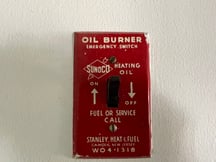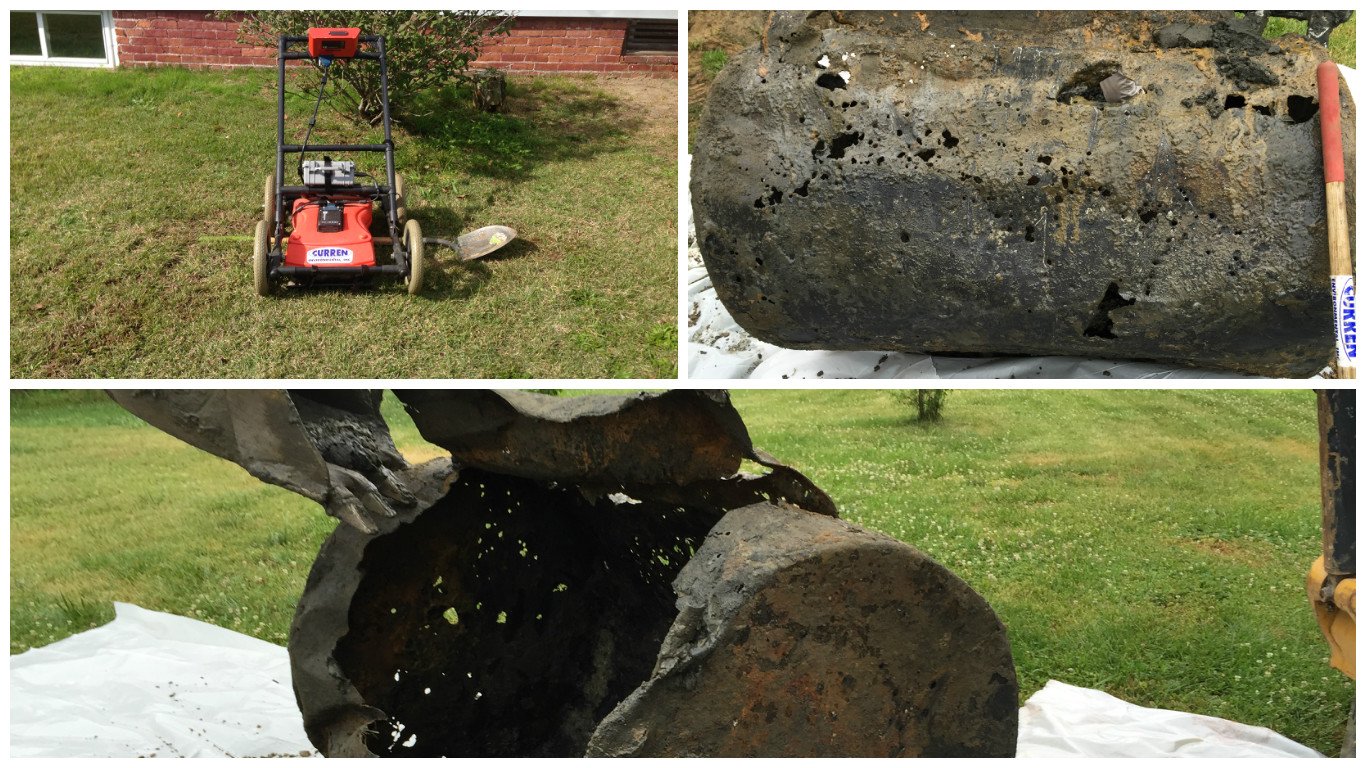Oil tank sweep inspections are gaining traction, leading to a surge of small companies equipped with metal detectors touting their professionalism. But can they truly deliver?
At Curren, we've encountered numerous oil tank sweep companies and reviewed their reports, often with disappointing results. In many cases, these one-person shops scan for an oil tank and provide a report that recommends “oil tank removal”, which requires a few weeks to ramp up to perform with permits and utility mark out. On the day of removal, it turns out to be little more than a sham, involving no oil tank in the ground at all. Unfortunately, clients are left feeling deceived, as their money is used for the tank removal, with no oil tank removed from underground. All the while, the real estate transaction is stalled.
It's time to choose a trustworthy partner for your tank removal needs—make informed decisions to protect your investment. What makes a great oil tank sweep inspection company? A company that removes oil tanks—one that knows oil tanks inside and out.


Oil Tank Sweep Fail. The company said there was an oil tank. No tank was found.
Many inspections are performed when buying a home, and most are cursory visual inspections of the HVAC system, soffits, chimneys, foundation, plumbing, sidewalks, decks, swimming pools, etc. These building components are commonly evaluated as part of your home inspection. What is missed by many buyers is the environmental liability aspect of purchasing a home. Environmental can be asbestos, radon, mold, lead paint, and oil tanks. Of all these environmental liabilities, oil tanks represent the biggest risk relative to remedial costs. A hidden underground oil tank can cost a couple thousands of dollars to a new homeowner if it's not caught during the inspection process. Worse is when an oil tank leaks, which can lead to costs in the tens of thousands of dollars.
If you're considering whether to get an oil tank sweep, remember this: when you decide to sell your home in the future, potential buyers may request one. Taking care of it now can save you stress and help you avoid surprises later. Over the past 30 years oil tank sweeps, oil tank scans, and/or oil tank inspections have become a common part of the home-buying process.
Why perform an oil tank sweep?
 Oil tanks belong to the property and if you buy a home with an oil tank you purchased all the costs associated with the oil tank, including oil tank removal, soil testing, and the most expensive part soil remediation (if required).
Oil tanks belong to the property and if you buy a home with an oil tank you purchased all the costs associated with the oil tank, including oil tank removal, soil testing, and the most expensive part soil remediation (if required).
Oil heat was popular in the Northeastern United States from the 1930s to the mid-1980s, this time frame encompasses a large part of the homes in the Northeast, meaning chances are the home you are looking to purchase utilized oil heat in the past. Also, homes built before 1930, most likely had oil heat. since coal was phased out as soon as a homeowner had a chance to switch, since coal required physical feeding of the furnace several times a day during the heating season.
What percentage of tank sweeps find prior oil heat?
With over 30 years of experience with oil tanks, we have crunched the numbers and found an average of about 75% of the oil tank sweeps find evidence of prior oil heat. That number should not be that surprising since natural gas really only became popular in the 1970s.
Who pays for the oil tank sweep?
Buyers typically pay for the oil tank sweep as it is part of their due diligence. Due diligence is what a reasonable person would do to investigate a property for problems prior to ownership.
Do property owners ever do oil tank sweeps?
Most property owners do not perform oil tank sweeps as they do not want to find an oil tank.
Oil Tank scan with Ground Penetrating Radar (GPR) or metal detector?
You should use both GPR and a metal detector to be thorough when performing a tank scan or oil tank sweep. Rely on GPR the most as it is what commercial sites use, metal detectors are more to prove that the object found by GPR is metallic. Remember, the best equipment is the most expensive, an $800.00 metal detector on Amazon.com should not be relied upon.
 Metal detectors beep if they find iron sand (a real thing), buried pipes, get too close to a metal fence or a structure with metal (yes homes have metal) or simply encounter buried metallic trash. GPR uses a screen so the geophysical technician can see the graphical image detected by the GPR antenna. Larger signals are tanks, smaller signals are usually pipes.
Metal detectors beep if they find iron sand (a real thing), buried pipes, get too close to a metal fence or a structure with metal (yes homes have metal) or simply encounter buried metallic trash. GPR uses a screen so the geophysical technician can see the graphical image detected by the GPR antenna. Larger signals are tanks, smaller signals are usually pipes.
Should the oil tank scan company perform removals?
Yes, the oil tank scan company should be responsible for removing oil tanks. This is because their technicians are well-versed in identifying underground and aboveground oil tanks, as well as recognizing other potential structures. Curren has been contacted by many clients who have hired oil tank scan companies and discovered anomalies or tank-like structures on their properties. These clients often request either a Ground Penetrating Radar (GPR) scan to further investigate or an immediate tank removal. The cost for tank removal typically exceeds $1,000, and in many cases, no actual tank is found. Instead, there may be large rocks, sewer lines, clay deposits, iron sand, or other materials that resemble a tank structure.








![lClUW0yuSZuqaJQmdD7CjA[1]](https://www.currenenvironmental.com/hs-fs/hubfs/lClUW0yuSZuqaJQmdD7CjA%5B1%5D.jpg?width=227&height=171&name=lClUW0yuSZuqaJQmdD7CjA%5B1%5D.jpg)





















